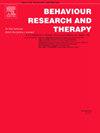我该留下还是走?研究快感缺乏个体基于奖励的决策
IF 4.5
2区 心理学
Q1 PSYCHOLOGY, CLINICAL
引用次数: 0
摘要
享乐症导致快乐和兴趣降低,这可能是基于奖励的决策过程改变的结果。尽管对快感缺乏者的研究通常侧重于在任务中做出选择,但日常生活中,奖励率会随着时间的推移而变化,决策也会随着时间的推移而变化。在这种情况下,觅食模型提供了一个框架,在这个框架中,个体必须考虑他们当前获得的奖励(前景),并将它们与其他地方(背景/环境)的潜在奖励进行权衡。方法在本研究中,我们旨在通过一个规范模型来描述觅食任务中最优决策,评估缺乏享乐者(与非缺乏享乐者)基于奖励的决策,并通过离开时间和离开时的奖励来研究奖励环境的变化是否会影响缺乏享乐的决策。结果低享乐缺乏组94例,平均年龄24岁,SD = 7.85;平均MADRS评分= 22.1)和高度快感缺乏症(n = 49;平均MADRS评分= 36.7)组。结果表明,高快感缺乏症个体在离开时间(p = 0.005, η2 = 0.064)和离开时间奖励率(p = 0.005, η2 = 0.12)上的决策过程均为次优。然而,与最初的假设相反,这些个体并没有表现出对环境变化的敏感性降低,而是在离开所有斑块类型方面表现出一致的延迟。结论快感缺乏与低估背景奖励环境的价值有关,但保留了利用奖励信息进行觅食决策的能力。这项任务可能对测量NIMH正价系统领域的关键结构有价值,包括奖励反应性和奖励评估。本文章由计算机程序翻译,如有差异,请以英文原文为准。
Should I stay or should I go? Investigating reward-based decision-making in anhedonic individuals
Background
Anhedonia leads to reduced pleasure and interest, and may result from altered reward-based decision-making processes. Whereas research with anhedonic individuals typically focuses on tasks to choose between options, daily life involves situations where reward rate varies and decisions evolve over time. In this scenario, foraging models provide a framework in which individuals must consider the rewards they are currently receiving (foreground) and weigh them against potential rewards available elsewhere (background/environment).
Methods
In this study, we aimed to evaluate reward-based decision making of anhedonic (vs. non-anhedonic) individuals using a foraging task in which optimal decisions are described by a normative model, and investigate whether changes in reward environment could impact the decisions as a function of anhedonia, measured by leaving time and reward at the time of leaving.
Results
A total of 94 individuals (mean age = 24yo, SD = 7.85) were allocated to low anhedonic (n = 45; mean MADRS score = 22.1) and high anhedonic (n = 49; mean MADRS score = 36.7) groups. Findings indicate that individuals with higher levels of anhedonia show suboptimal decision-making processes in both leaving time (p = 0.005, η2 = 0.064) and reward rate at leaving time (p = 0.005, η2 = 0.12). However, contrary to initial hypotheses, these individuals did not demonstrate reduced sensitivity to environmental changes but rather displayed a consistent delay in leaving all patch types.
Conclusion
Results suggest that anhedonia is associated with underestimation of the value of the background reward environment, but preserved abilities to utilize reward information for making foraging decisions. This task might be valuable for measuring key constructs within the NIMH Positive Valence Systems domain, including Reward Responsiveness and Reward Valuation.
求助全文
通过发布文献求助,成功后即可免费获取论文全文。
去求助
来源期刊

Behaviour Research and Therapy
PSYCHOLOGY, CLINICAL-
CiteScore
7.50
自引率
7.30%
发文量
148
期刊介绍:
The major focus of Behaviour Research and Therapy is an experimental psychopathology approach to understanding emotional and behavioral disorders and their prevention and treatment, using cognitive, behavioral, and psychophysiological (including neural) methods and models. This includes laboratory-based experimental studies with healthy, at risk and subclinical individuals that inform clinical application as well as studies with clinically severe samples. The following types of submissions are encouraged: theoretical reviews of mechanisms that contribute to psychopathology and that offer new treatment targets; tests of novel, mechanistically focused psychological interventions, especially ones that include theory-driven or experimentally-derived predictors, moderators and mediators; and innovations in dissemination and implementation of evidence-based practices into clinical practice in psychology and associated fields, especially those that target underlying mechanisms or focus on novel approaches to treatment delivery. In addition to traditional psychological disorders, the scope of the journal includes behavioural medicine (e.g., chronic pain). The journal will not consider manuscripts dealing primarily with measurement, psychometric analyses, and personality assessment.
 求助内容:
求助内容: 应助结果提醒方式:
应助结果提醒方式:


